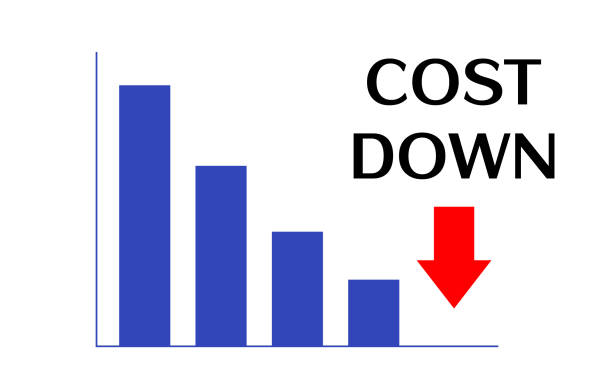
Understanding the intricate dynamics of the economy can be complex. However, certain economic indicators, such as the Gross Domestic Product (GDP), can offer insights and clarity. This blog post will take a deep dive into the concept of GDP, its connection to local economies, and its role in economic policy decision-making. Additionally, we’ll examine how measuring GDP’s impact on local economies and understand its benefits to local businesses.
Understanding Gross Domestic Product(GDP)
Unraveling the intricate puzzle of Gross Domestic Product (GDP) can unlock a wealth of knowledge about a nation’s economic standing. Akin to the pulse of a nation, GDP encapsulates the full monetary worth of all goods and services produced within a country’s boundaries over a certain period.
But GDP isn’t just about hard numbers. It’s also a mirror reflecting the nation’s economic vitality. Broken down into four key pillars—consumption, investment, government spending, and net exports—each plays a unique role in determining the final figure. Consumption deals with private expenditures like food and rent, investment looks at business capital spending, government spending evaluates public expenditures, and net exports calculate the difference between what a nation exports and imports.
Yet, it’s more than just an economic indicator. In many ways, GDP acts as a nation’s economic health report, setting the pace and shaping the narrative of economic policy decisions. The growth, stagnation, or decline of GDP can paint a vivid picture of a nation’s current economic status, dictating the tempo of potential opportunities for businesses, employment rates, and individuals’ income levels.
So, by understanding GDP, you’re not just understanding a series of numbers. You’re gaining insight into the health of an economy, the prosperity of a nation, and the potential trajectory of your local economy.
The Link between GDP and Local Economies
GDP does more than just reflect the state of the national economy; it’s a camera lens that provides a wide-angle view, capturing the health and vitality of local economies as well. A robust GDP growth rate often signals a flourishing national economy, which can ripple outwards, creating a positive domino effect at the local level. This could manifest as increased job opportunities, higher wages, and enhanced consumer spending, leading to an elevated standard of living locally.
On the flip side, a stagnant or declining GDP can act as a harbinger of economic slowdown. Such downturns can have a significant domino effect too, but in the opposite direction. They can lead to higher unemployment rates, reduced consumer spending, and a lower quality of life at the community level.
It’s important to note, though, that the impact of GDP on local economies can vary based on numerous factors. These can include the resilience of the local economy, the industries that dominate it, and the ability of local leaders to respond to economic challenges. Therefore, while GDP provides a general overview, it’s one piece of a larger economic puzzle that shapes the local economic landscape.

GDP’s Role in Economic Policy Decision-Making
In the realm of economic policy decision-making, GDP dons the role of a valuable guiding star. This pivotal economic indicator is used by policy makers at all levels as a gauge to craft, execute, and assess economic strategies. For instance, when a nation is grappling with sluggish GDP growth, it may trigger the government to turn to fiscal policies such as tax reductions or amplify public spending to jumpstart the economy.
These fiscal decisions are like ripples in a pond, extending their impact to the local economies. The influence is far-reaching, potentially sparking job growth, catalyzing infrastructural progress, and enhancing the availability of public services. These GDP-informed policy decisions have the potential to reshape the socio-economic fabric of local communities.
However, the role of GDP in economic policy-making is not confined to just periods of economic lull. In times of prosperity, when GDP figures are buoyant, the government may opt to tighten fiscal policies, which might involve scaling back public spending or increasing taxes. This fiscal prudence is aimed at avoiding overheating of the economy and keeping inflation in check.
While the larger picture of GDP is pivotal, it is also vital to focus on its individual elements – consumption, investment, government spending, and net exports. Understanding these components and their dynamics can help policy-makers tailor economic strategies that cater to the specific needs of the local economies. Thus, GDP serves as a versatile tool in the policy-making kit, facilitating responsive and informed economic decisions.
Measuring the Impact of GDP on the Local Economy
Peering into the looking glass of GDP’s impact on the local economy can unveil a myriad of measures. One such measure could be the shifts in employment rates. With an upswing in GDP, the local employment scene could bloom, catalyzing job creation and reducing unemployment rates. Simultaneously, local businesses may experience a significant increase in their revenues, nudging them toward expansion, and potential growth. Another ripple effect of a buoyant GDP can be seen in the consumer spending patterns. A robust GDP often fuels consumer confidence, leading to an uptick in spending, which further stimulates the local economy.
However, a dip in GDP can have the inverse effect. Local businesses may find themselves grappling with diminished sales, putting a strain on profits, and potentially leading to layoffs or even closures. Consumer spending can also take a hit as households tighten their purse strings in response to economic uncertainty.
Thus, GDP’s impact on the local economy can be measured in many ways, each telling a unique story about the health of the local economy. But it’s essential to remember that these measures, while valuable, are just parts of a larger, more complex economic narrative.
Case Study: GDP’s Local Impact in Times of Recession
Casting our minds back to 2008, the US economy was rocked by what came to be known as the Great Recession. The nation’s GDP retracted sharply, a clear signal that economic health was deteriorating at an alarming rate. As this financial storm raged, the effects were felt heavily at the local level. Unemployment shot up as businesses, struggling to stay afloat in a tumultuous economic climate, were forced to lay off staff. With job security at an all-time low, consumer spending, the lifeblood of many local economies, took a drastic hit.
But this is not a story of doom and gloom. It’s a testament to the power of responsive economic policy. Armed with the troubling GDP data, government leaders sprang into action. They implemented a series of fiscal stimulus measures, infused fresh capital into the market, and eased monetary policies. These actions gradually started to turn the tide, aiding in the eventual recovery of the economy.
The 2008 financial crisis serves as a stark reminder of GDP’s importance in our economic ecosystem. It’s an illustrative example of how a macroeconomic indicator can have tangible, local consequences. But perhaps most importantly, it underscores how understanding and acting on GDP data can guide the course of an economy from the brink of disaster to the road to recovery.

How Understanding GDP Benefits Local Businesses
Decoding the mysteries of GDP can be a game changer for local businesses. During economic high tides, when GDP is on an upward trajectory, it might be an opportune time for businesses to contemplate growth strategies, such as branching out or dabbling in new markets. Conversely, in the throes of a downturn, it could be prudent to tighten the belt and implement cost-saving measures.
It’s not just about reacting to the swings of GDP though. An understanding of its constituents – consumption, investment, government spending, and net exports – can prove insightful. This knowledge can empower businesses to spot potential goldmines and pitfalls within the local economic scene. For example, increased consumption could signal a ripe market for certain goods or services, while a boost in government spending might open doors to public contracts. On the other hand, a dip in net exports could be a red flag for export-dependent businesses.
In short, the treasure trove of information encapsulated in GDP can equip local businesses with the foresight to navigate the economic seas. Whether they’re cruising in calm waters or weathering a storm, an understanding of GDP can guide their course, helping them stay afloat and thrive.





